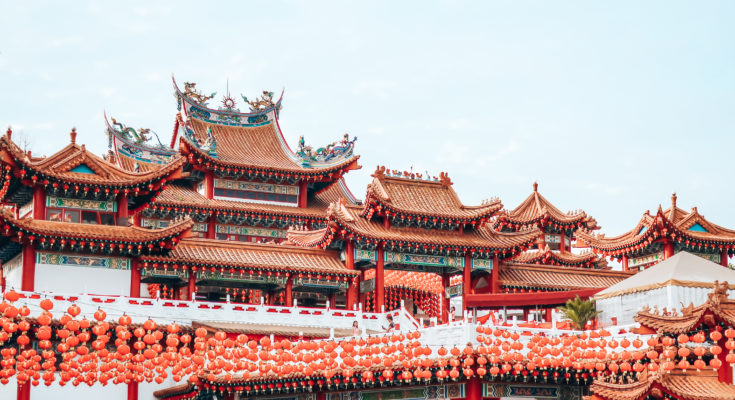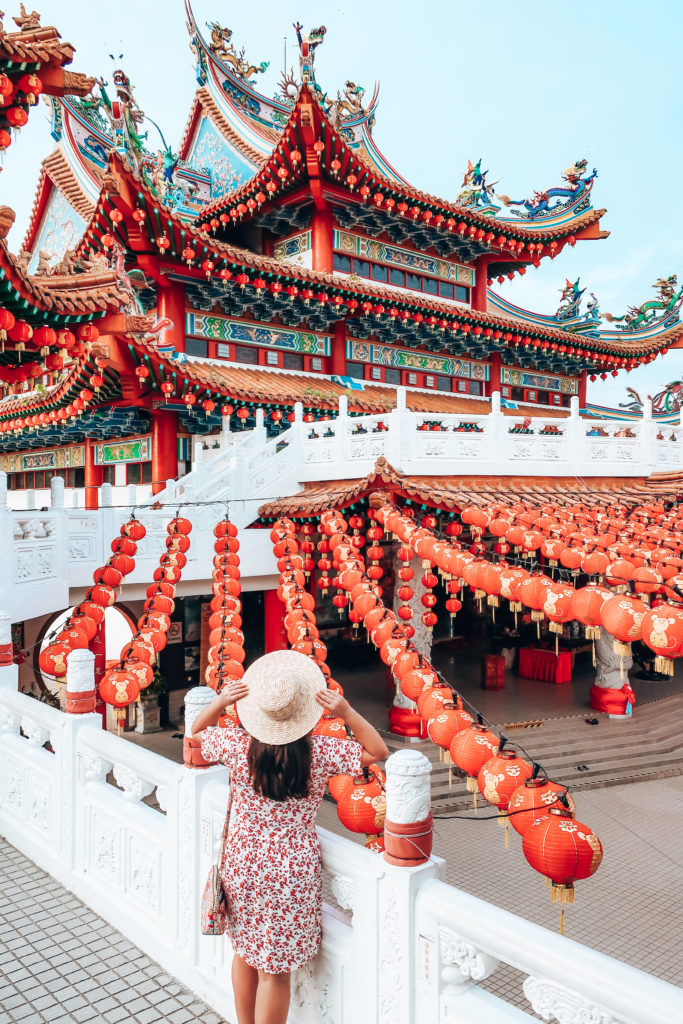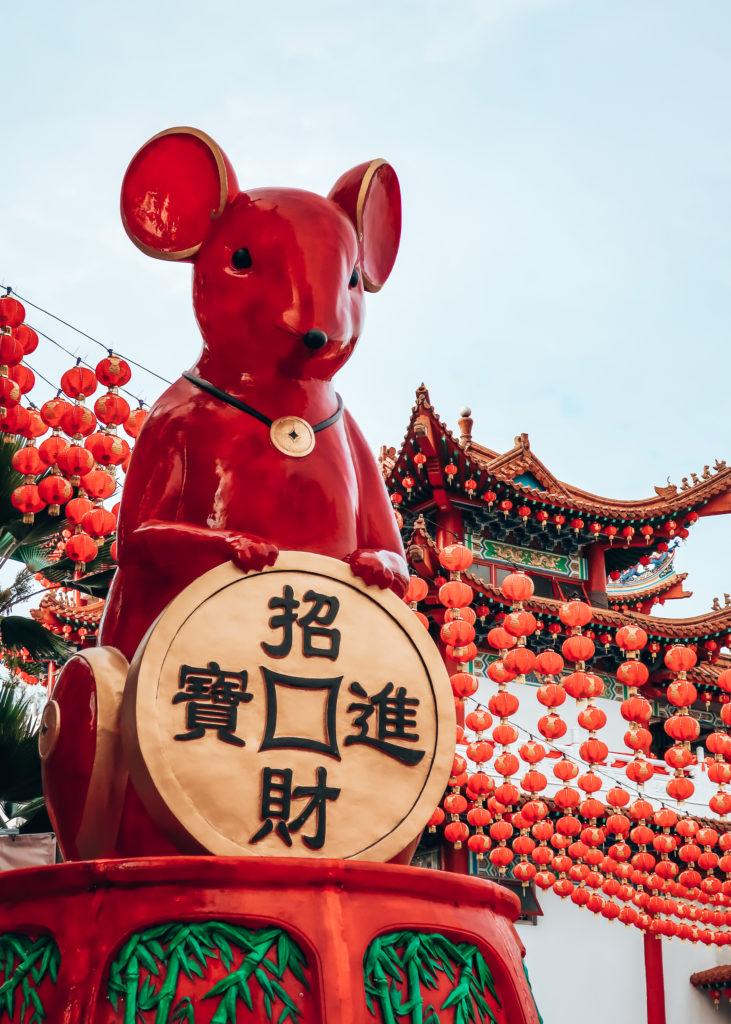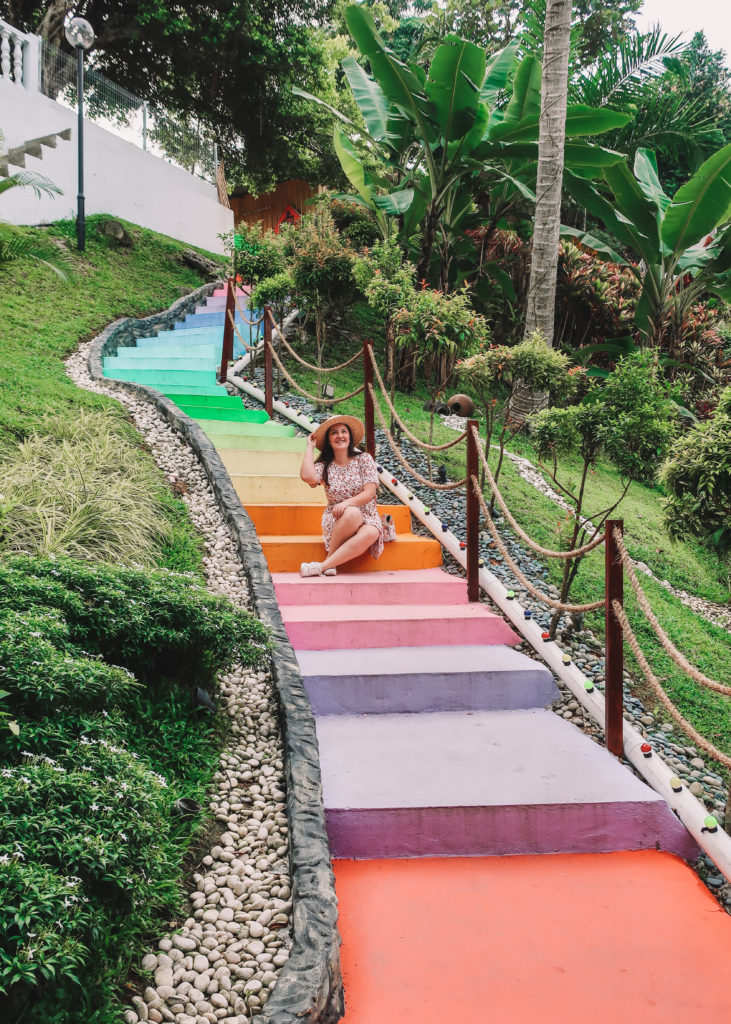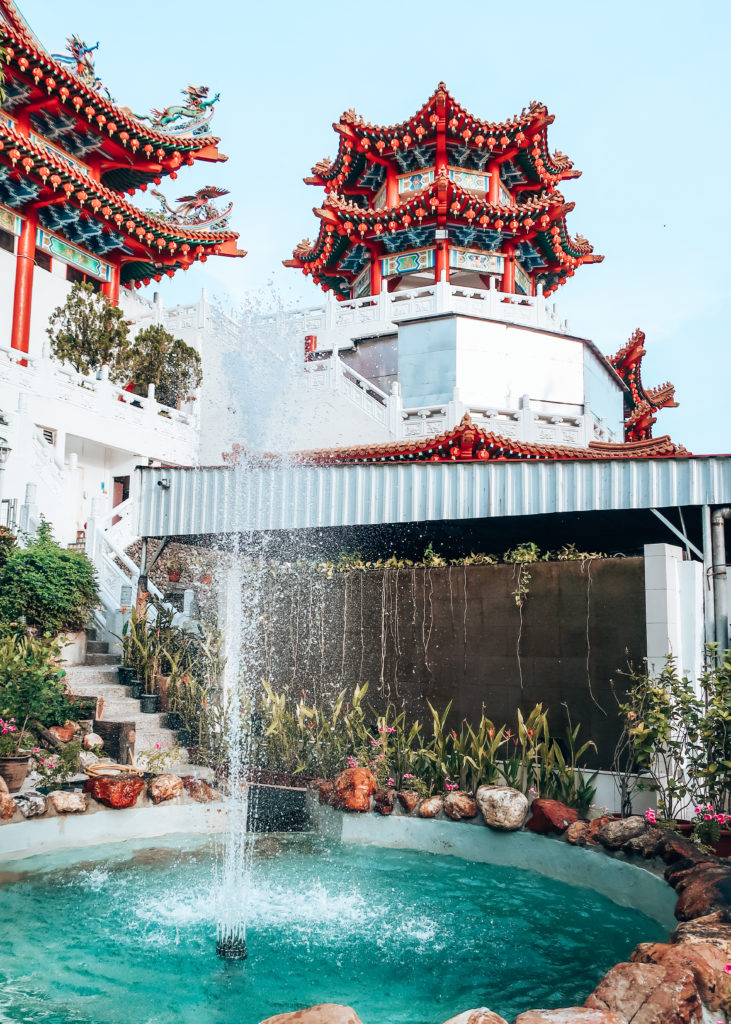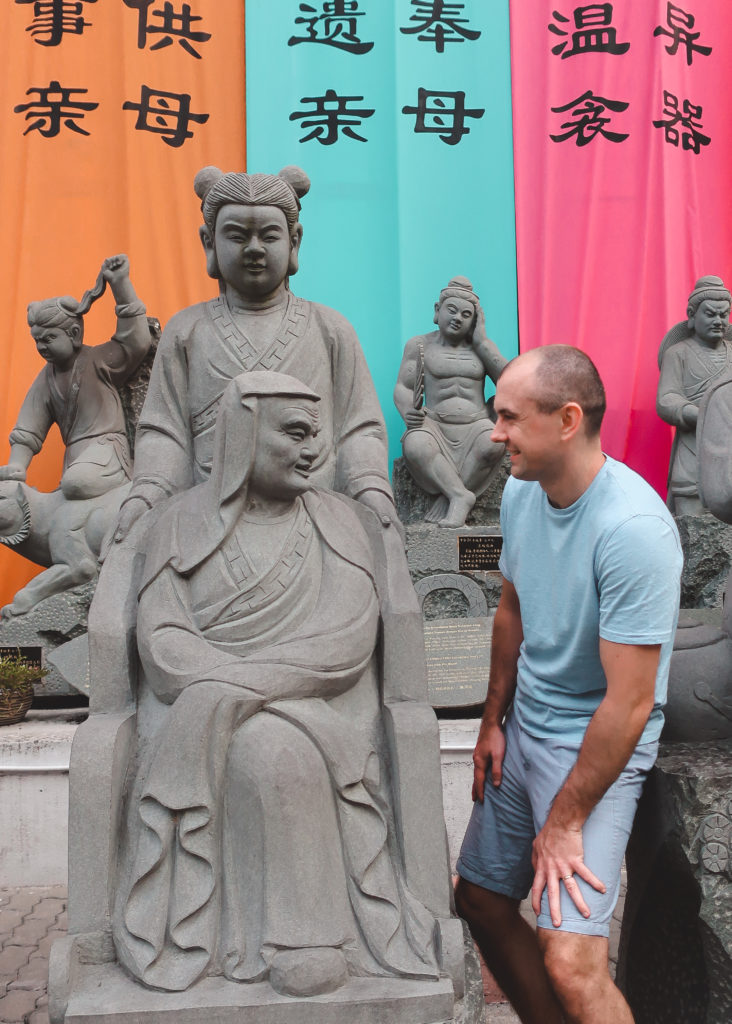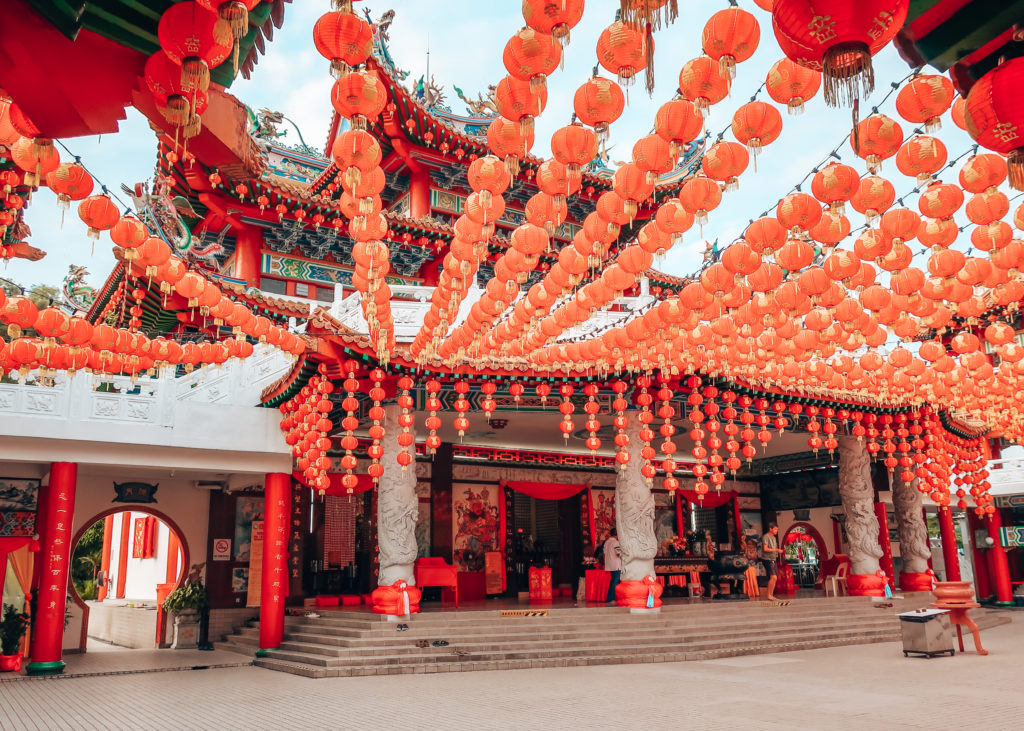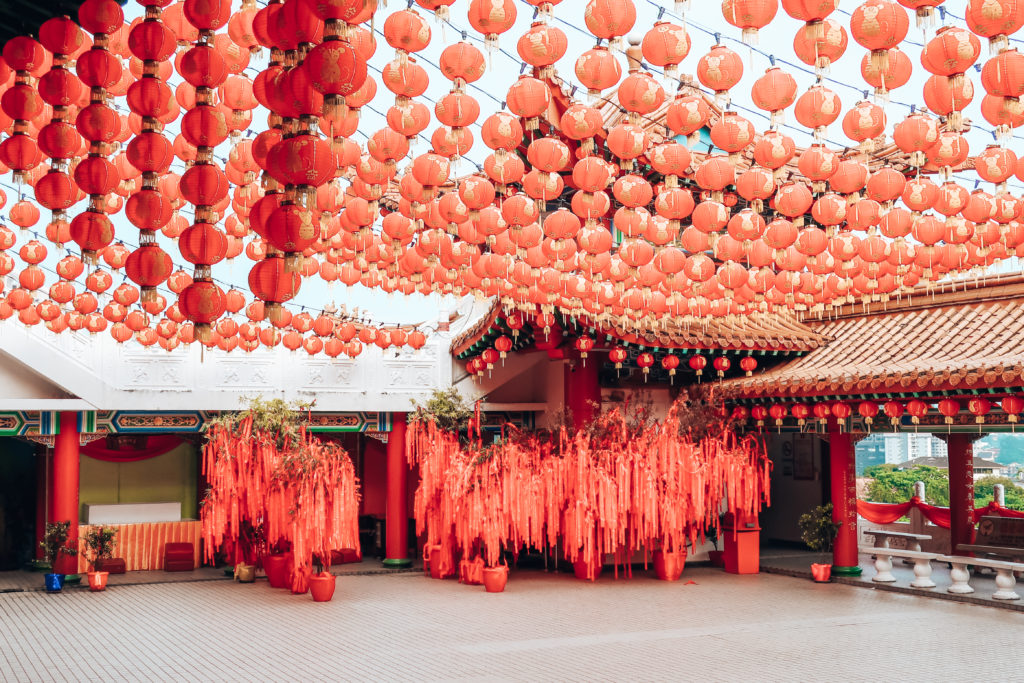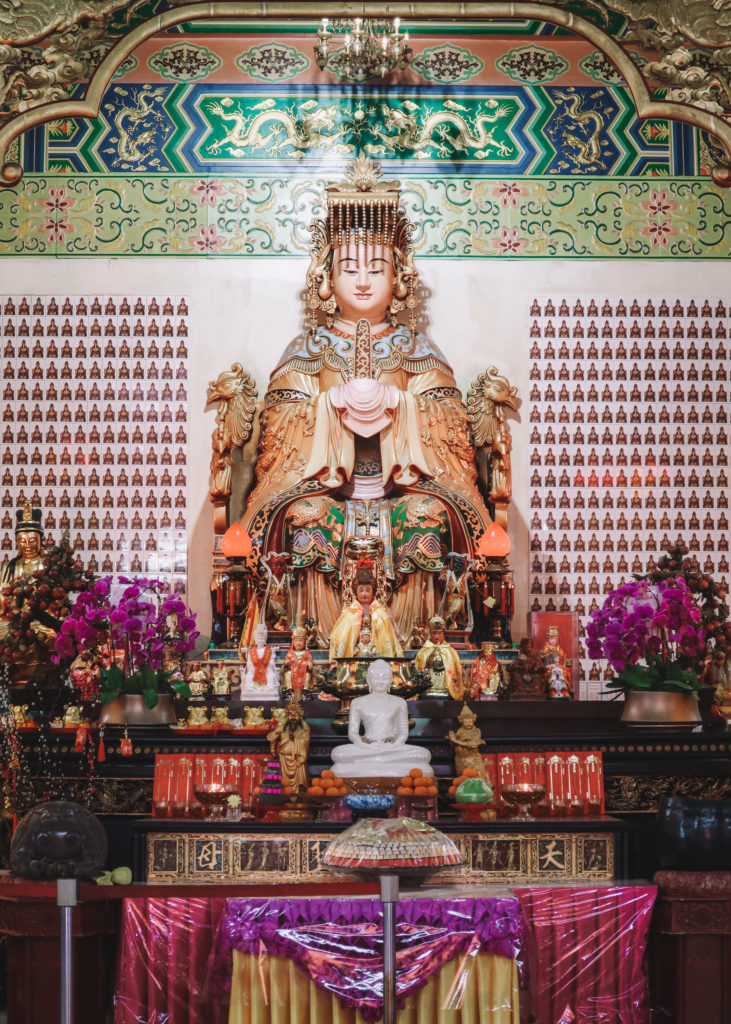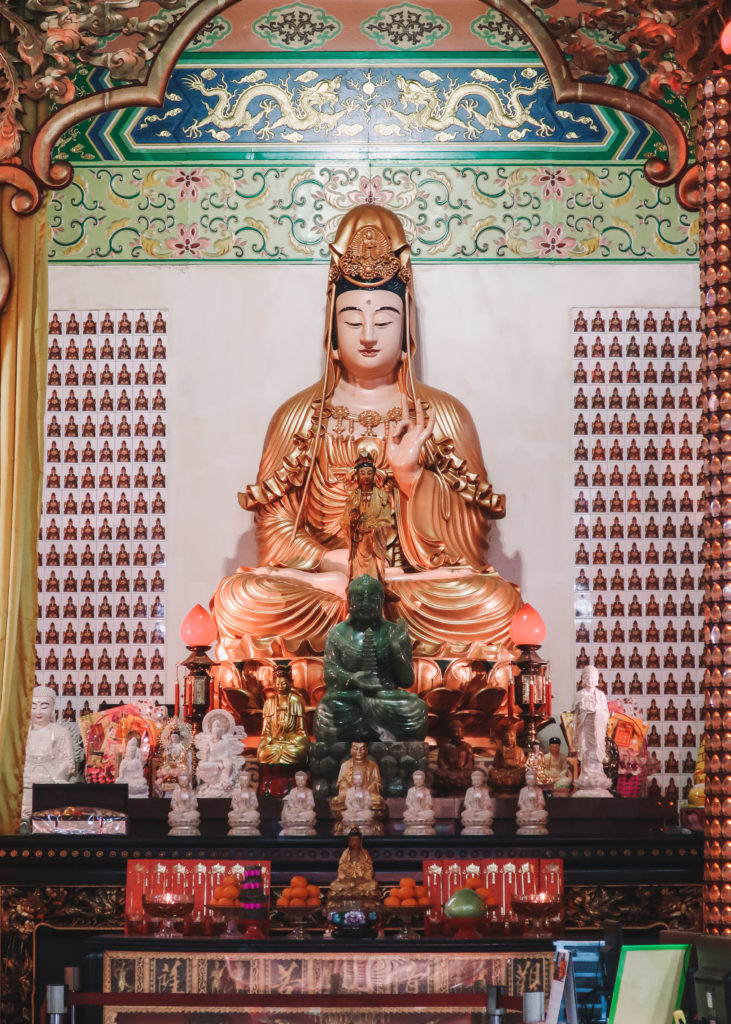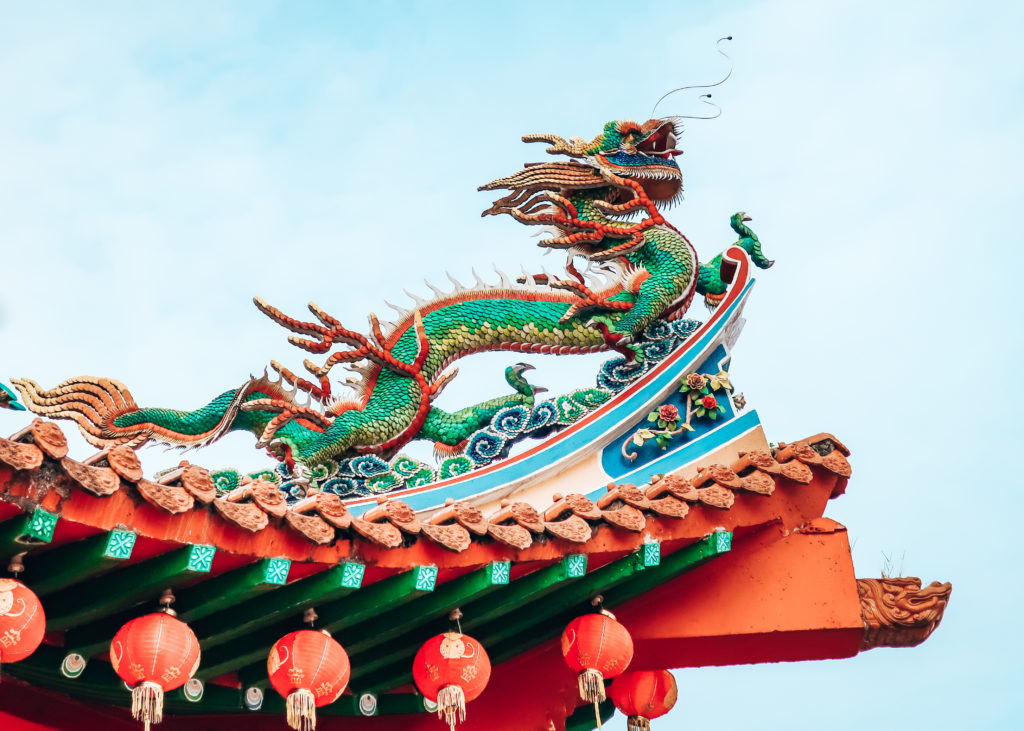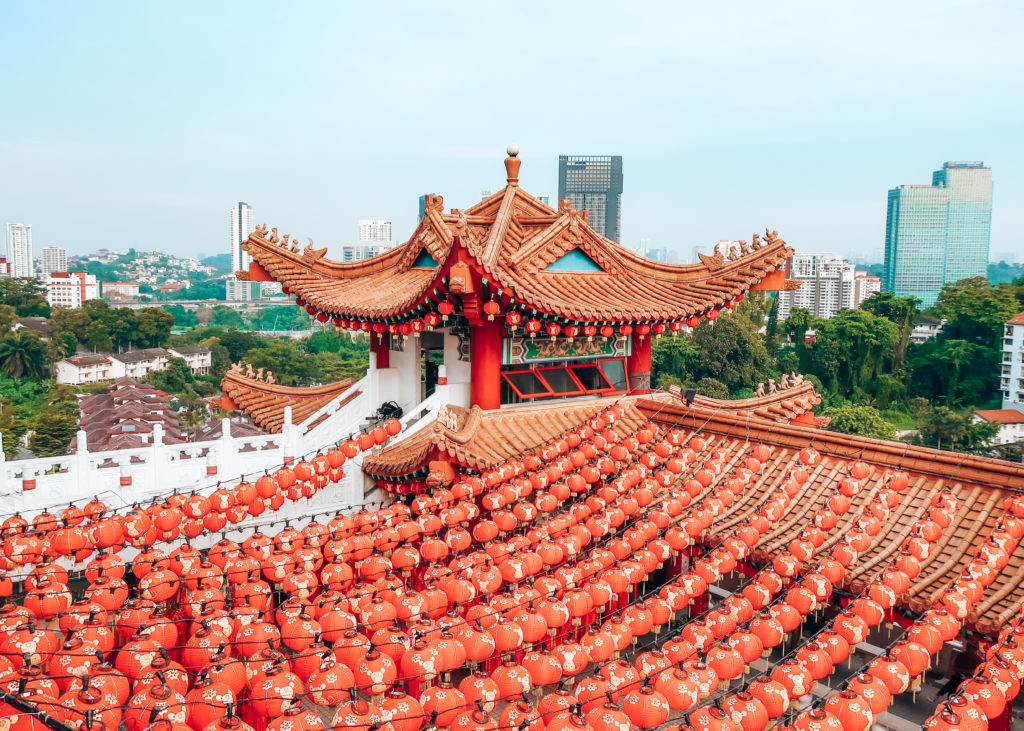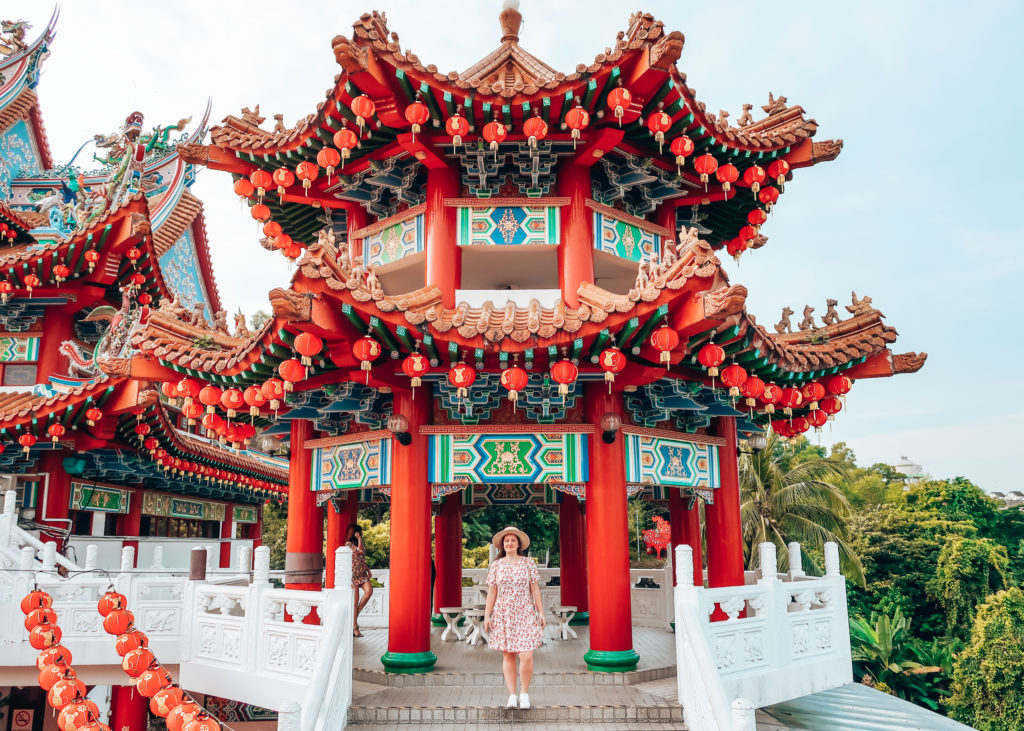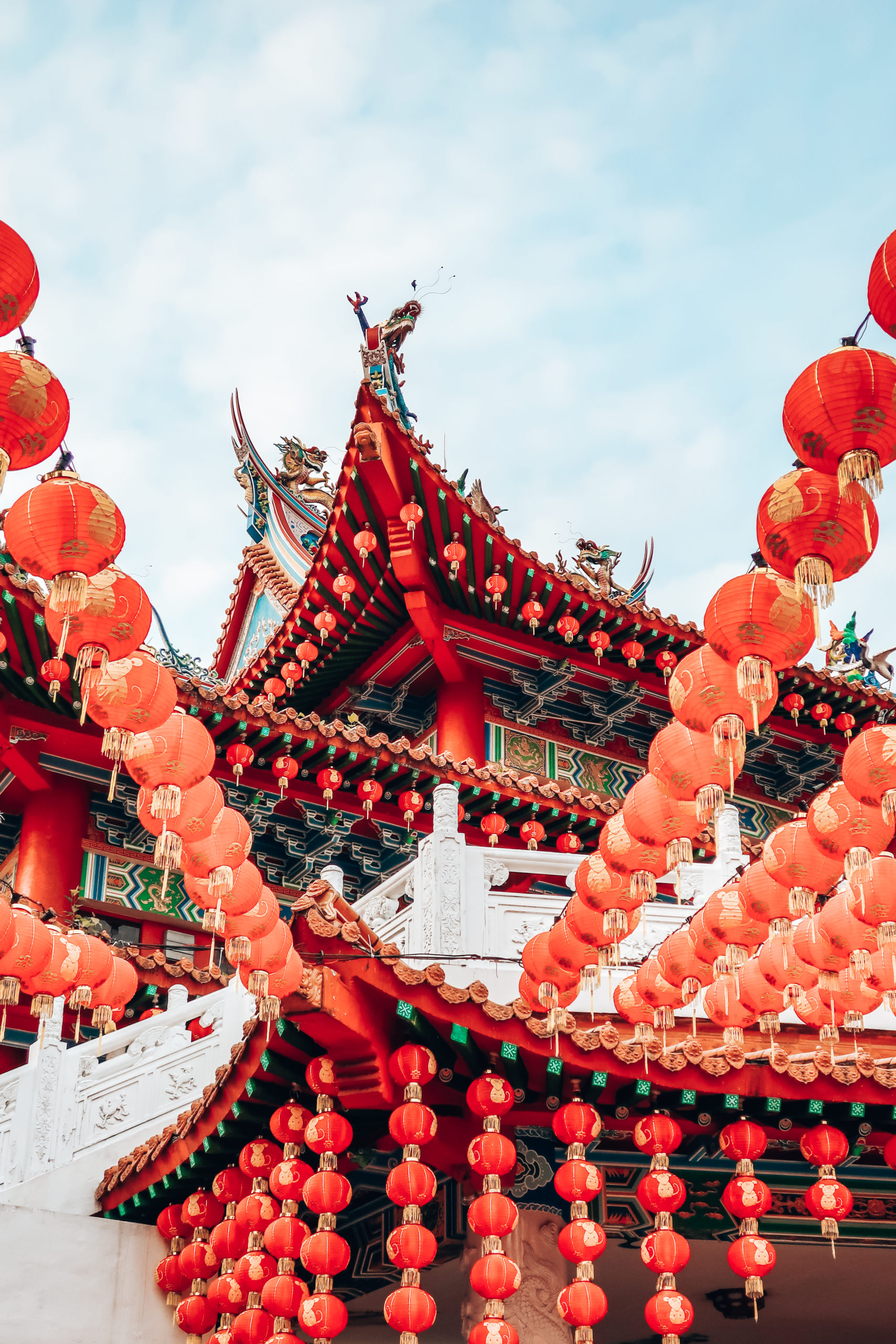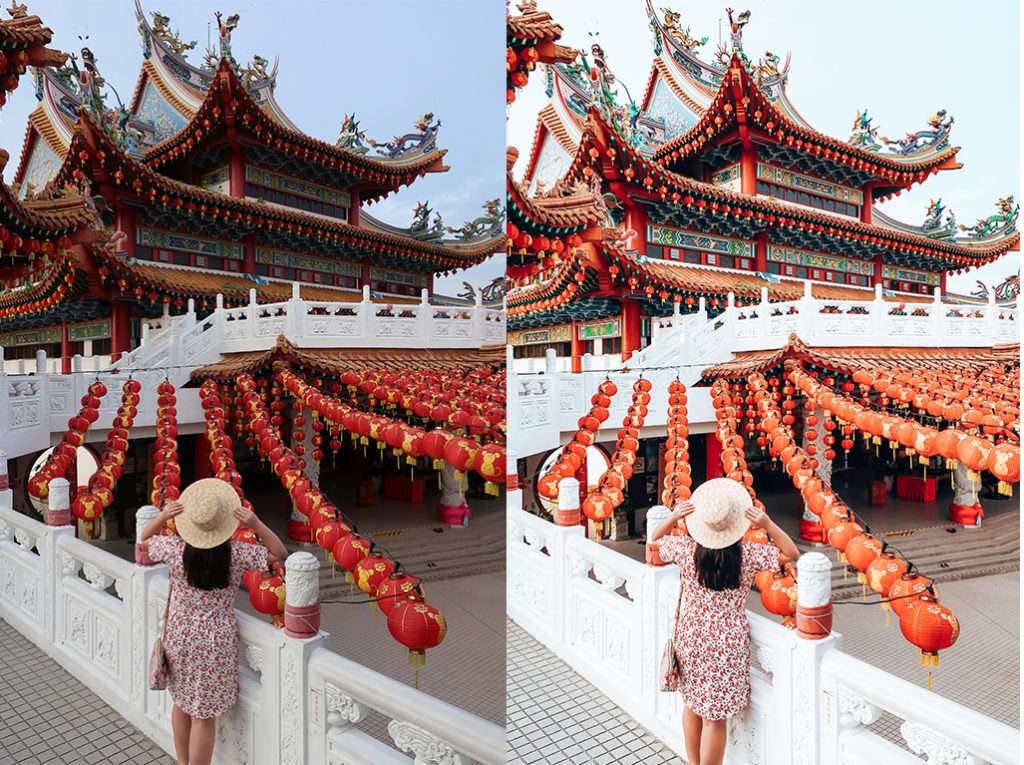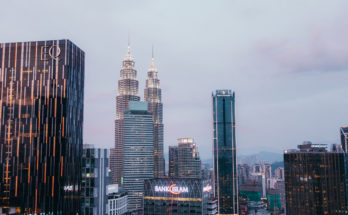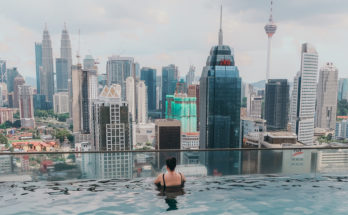Considered by many to be the most beautiful temple in the world, the Thean Hou Temple is one of the most visited tourist attractions in Kuala Lumpur and has, since its opening in 1989, opened its doors to millions of worshipers, tourists and photographers looking to capture the thousands of red and yellow lanterns.
The Thean Hou Temple’s construction started in 1981 by the Hainanese – a group of native Chinese people from Hainan, the southernmost and smallest Chinese province. Most Hainanese people were originally fisherman, which makes sense that the temple, completed in 1987 is dedicated to Thean Hou, the Chinese Sea Goddess who protects fishermen.
Thean Hou Temple, built in 6 tiers, is one of the largest temples in Malaysia and South East Asia and serves as both a place of worship and as a functional space for events such as yearly Chinese New Year celebrations, fortune telling ceremonies, martial arts demonstrations and training sessions and weddings.
When visiting the temple, don’t rush to get inside. Built with designs and architectural elements borrowed from traditional and modern building techniques, the Thean Hou Temple is quite a unique building that incorporates cultural elements from Buddhism, Taoism, and Confucianism and it deserves to be admired from the outside for some time. Facing the temple, there is a large garden to the left that is dotted with interesting statues, including that of the Three Wise Men – the God of Happiness and Prosperity who holds a child, the God of Wealth who holds a sword and the God of Longevity who holds a staff and a peach.
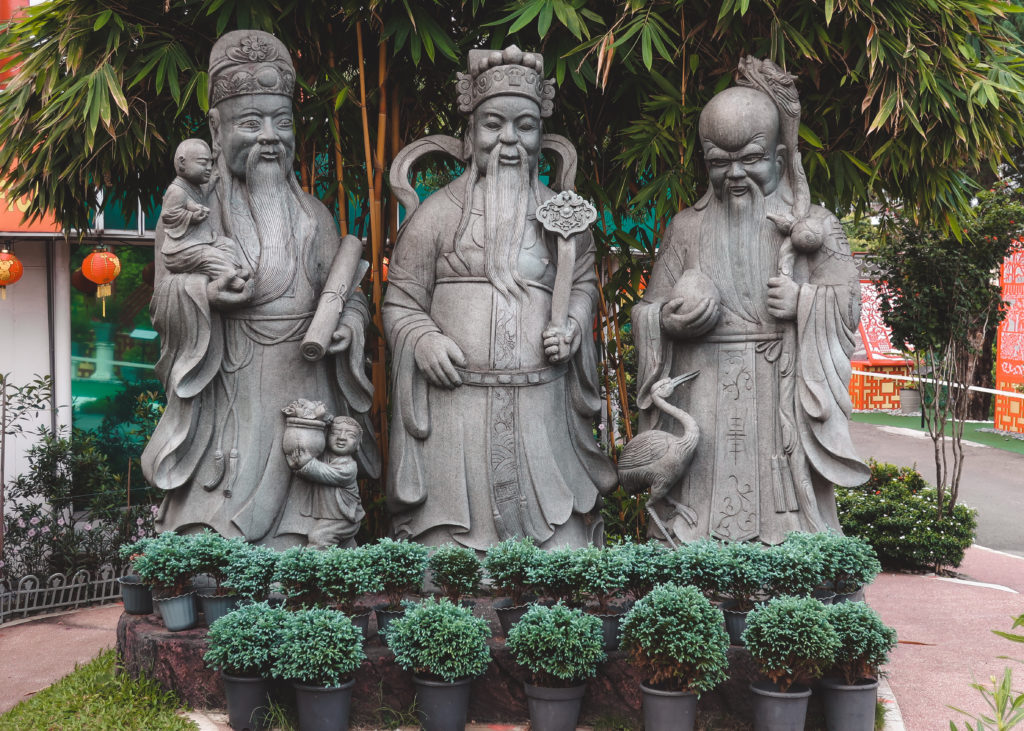
In the garden there are also statues of the 12 Chinese zodiac animals where you can find your own birth year’s animal and learn more about your personality. This year, 2020, is the Year of the Rat according to Chinese zodiac. Although most people don’t consider a rat the most adorable of creatures, it ranks first on the Chinese zodiac and is associated with the characteristics of spirit, wit, alertness, delicacy, flexibility and vitality.
Fun Fact: I was born in 1991, which was the Year of the Goat/Sheep. According to the Chinese zodiac, my strengths include being gentle, softhearted, considerate, attractive, hardworking, persistent and thrift. My weaknesses include being indecisive, timid, vain, pessimistic, moody and weak-willed. Even though I am a bit unsure as to how true zodiac signs are, it is still pretty funny! Why not find out more about our Chinese zodiac and let me know in the comments if you think the characteristics are true for you!
Also left of the main temple, behind the zodiac animal statues, is a path that will lead you to the turtle pond, a water fountain and a stunning herb garden filled with buzzing bees and hundreds of butterflies. To the right of the main temple you will find a small fountain with the Goddess of Mercy dispensing water from a small jar, more carefully maintained gardens, a large Chinese chess board and some really pretty colourful steps that lead to the back of the temple where there are more traditional Chinese statues.
Once you are done exploring the outdoor aspects of the temple, it’s time to enter the Thean Hou Temple from its front entrance through a multi-arched gateway with red pillars – the colour symbolic of prosperity and good fortune. From there, signs will lead you to the centre court and main hall of the temple on the second floor which is decorated with hundreds, if not thousands, of red, orange and yellow Chinese lanterns.
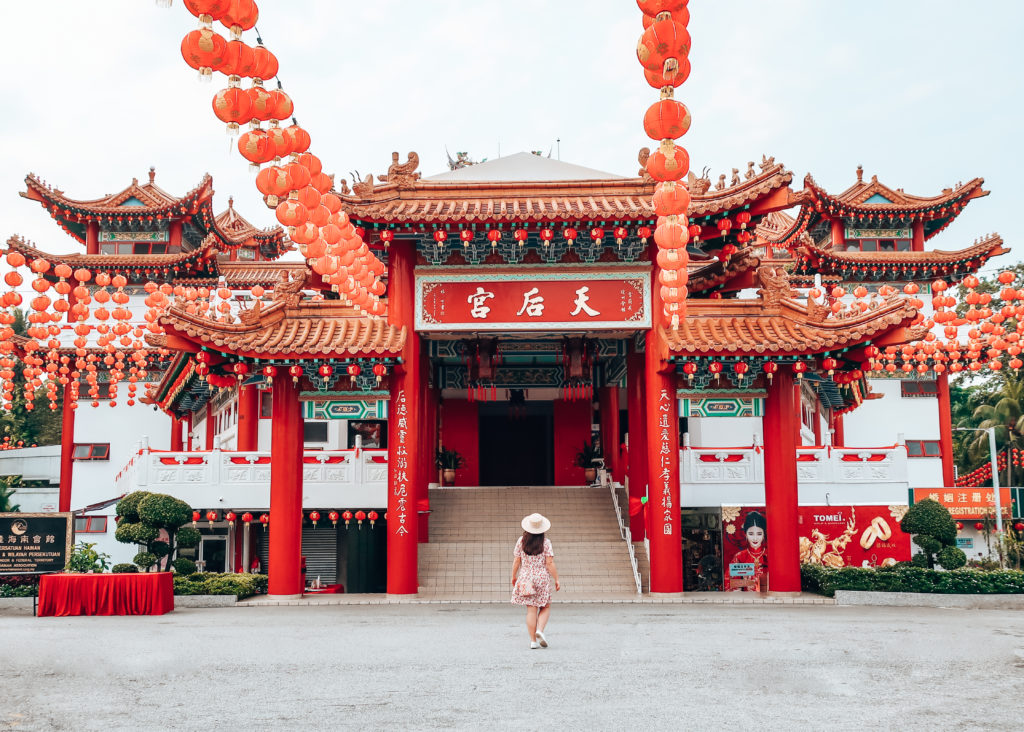
Leading off from the centre courtyard is the prayer hall where devotees worship in front of three elaborately decorated altars, each with a sculpture of a goddess. At the centre is the statue of Thean Hou, the Goddess of the Sea to whom the temple is dedicated. To the right of her sits the statue of Guan Yin, the Goddess of Mercy and to the left is a statue of Shui Wei Sheng Niang, the Goddess of the Waterfront. In the middle of the hall and between the altars are two pairs of Kau Cim oracles from which visitors can request answers or fortunes.
If you are looking to dip your toes in Chinese culture, leave your shoes at the entrance of the prayer hall and for a few Malaysian ringgits, buy some fragrant joss sticks, place them in the burner and soak in the wonderful atmosphere as the smell of incense fills the hall. Remember that this is a place of worship, so don’t disturb those practicing their religion and culture.
As you move away from the centre court and prayer hall up the stairs to the next levels, keep your eyes open for the fantastic traditional designs that cover every inch of the temple. Decorated all over with complex finishings and ornate carvings, the amount of detail is incredible. From the upper levels you can also get close-up views of the mosaic dragons and phoenixes adorning the temple’s pointed eaves.
Top Tip: If you are planning to go to Thean Hou Temple for photos, be patient. From early morning the temple is filled with tourist and worshipers, but take your time, play with angles and I can assure you, you will get the shots that you want.
Once you are done exploring all the nooks and crannies of this overly decorated temple, go down to the lower level under the centre court where you will find a few small shops where you can buy souvenirs and a little food court serving simple but very affordable meals.
Before you visit the Thean Hou Temple, there are a few things you should know. Firstly, the temple is one of the few free attractions in Kuala Lumpur and with no official entrance fee, a small donation is recommended to support the upkeep of the temple. Thean Hou Temple is open from 8am to 10pm on most days, but note that this may change due to special events and celebrations. Unlike other temples in Asia, the Thean Hou Temple is more relaxed and there is no formal dress code for visiting, but as it is still a place of worship, I suggest avoiding short skirts or shorts out of respect for others.
The Thean Hou Temple has become one of Kuala Lumpur’s major tourist attractions in its own right and attracts over a million visitors each year, most of whom arrive by bus as part of organized tours around 9am. Therefore, if you want to explore the temple without the crowds and take great pictures, make sure you arrive by 8am. To get to the Thean Hou Temple via public transport, take the metro or monorail to KL Sentral from where you must walk to and up the Robson hill, taking about half an hour. Note that the last few hundred meters are very steep and can be pretty terrible in the extreme heat. If you are feeling lazy and would rather travel to the temple in airconditioned style, use the Grab app and zip to the temple in a modern taxi for around 10 RM.
If you would like to see more pictures of my time in Malaysia, please visit me on Pinterest at @LuzanneFletcher and follow me on Instagram at @luzanne_f. Also check out the related article section below if you want to read more about the amazing things to do and see in Kuala Lumpur.
To help you make the most of the amazing pictures you will be taking at the Thean Hou Temple, I have developed some amazing free mobile and desktop presets that you can use to transform your pictures. All you have to do is download the zip folder for either the mobile or desktop presets to the matching device, follow the easy step by step instructions and before you know if you will be editing like a pro! This preset works especially well on photos that have a lot of red, orange and white in them and will give them a fun and bright look. Once you have used the presets, remember to tag me on Instagram at @luzanne_f and use the hashtag #travelpresetsbylu so that I can see your amazing photos!
For the mobile presets you will need the free version of the Adobe Lightroom app that is available in the Android Play Store and in the Apple iStore. For the desktop presets you will need the paid for version of Adobe Lightroom.
Here are some transformations using only my Thean Hou Temple preset!

